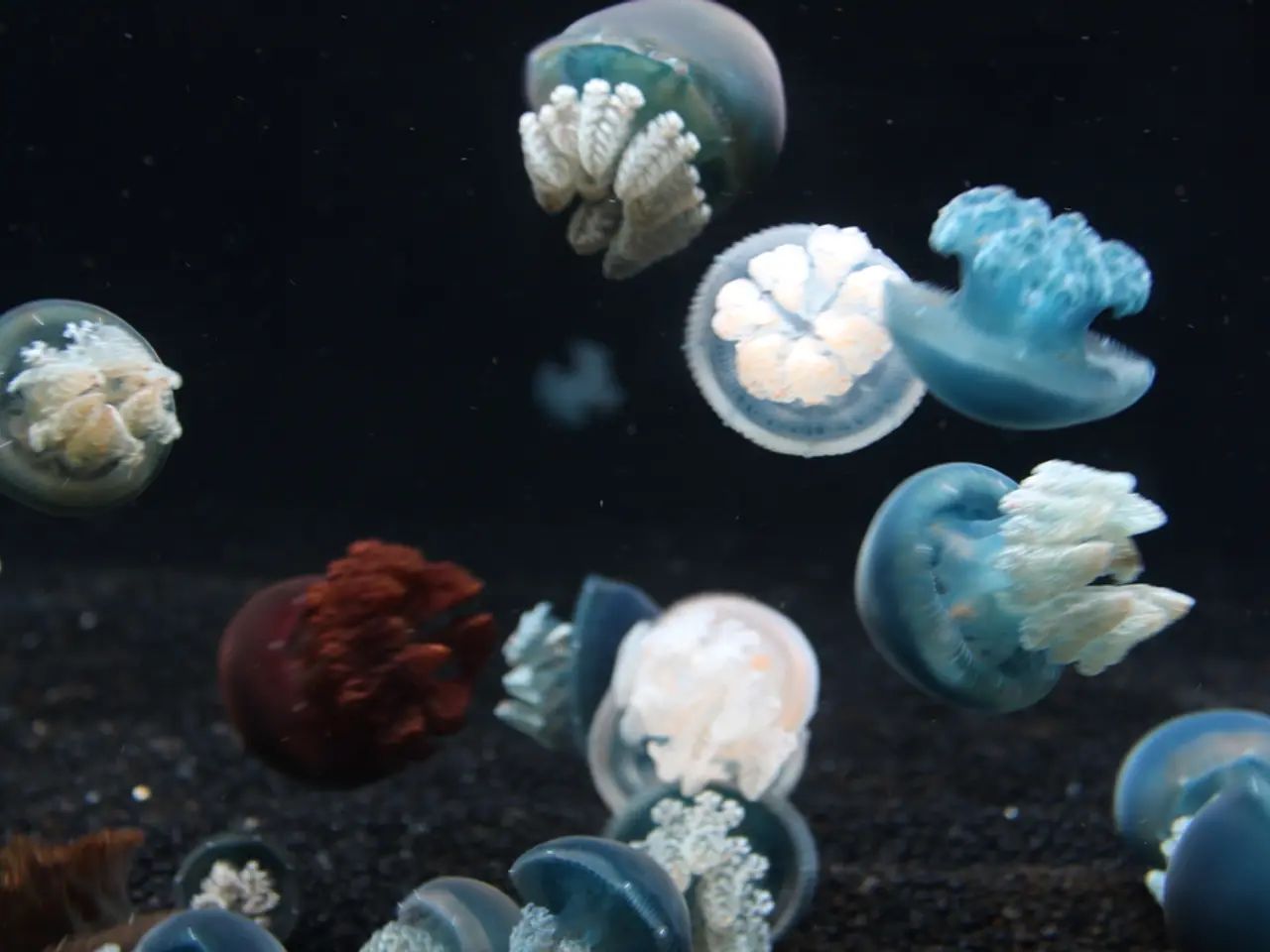Gargantuan and erratic cluster of jellyfish disrupts operations at a nuclear facility
Jellyfish-Induced Nuclear Shutdowns: A Growing Concern for Coastal Power Plants
A series of unexpected events have disrupted the operations of several nuclear power plants, most recently the Gravelines plant in France. The cause? A swarm of jellyfish.
The Gravelines plant, Western Europe’s largest nuclear facility with six reactors, experienced an automatic shutdown of four reactors in August 2025 due to a massive swarm of jellyfish clogging the filter drums of its seawater cooling pumps [1][2][3][4]. This event was triggered by a marine heat wave causing jellyfish blooms in the English Channel near the plant, showing how warming ocean waters amplify such ecological disruptions [2][3].
Similar incidents have occurred in the past at coastal reactors in countries like Sweden, Japan, and Scotland, where jellyfish swarms and related marine life disruptions have caused outages [3]. The Gravelines plant is not the first to face this challenge, but it is the most recent and most prominent case.
The affected reactors at Gravelines are units 2, 3, 4, and 6. The shutdowns occurred between 11pm on 10 August and 6am on 11 August. Despite the shutdown, the safety of the facility, personnel, and the environment remained unaffected [1].
The pumping stations affected are in the non-nuclear part of the plant. The Gravelines site draws water for its cooling systems from a canal connected to the North Sea.
Jellyfish breed faster when water is warmer, as stated by Derek Wright, a marine biology consultant at the National Oceanic and Atmospheric Administration Fisheries. Areas like the North Sea are becoming warmer, according to Wright. Jellyfish can also hitch rides on tanker ships, entering the ships' ballast tanks in one port and often getting pumped out into waters halfway across the globe [5].
The Gravelines plant, which can produce a total of 5.4 gigawatts of power and can power around 5 million homes, has temporarily stopped production while teams try to clear the blockage caused by the jellyfish. However, France is still exporting more than four gigawatts of electricity to the UK despite the shutdown of these four reactors [6].
The situation urges adaptation measures for nuclear plants reliant on seawater cooling, including climate-resilient infrastructure and possibly shifting to alternate cooling technologies or hybrid energy systems [3].
| Power Plant / Location | Incident Details | Frequency | |--------------------------|---------------------------------------------------|----------------------------------| | Gravelines, France | Four reactors automatically shut down in August 2025 due to jellyfish swarms clogging cooling filters amid a marine heat wave[1][2][3][4] | Sporadic but increasing due to warming seas | | Sweden, Japan, Scotland | Past incidents of jellyfish or marine species disrupting seawater intake systems[3] | Occasional, especially during warmer periods |
Despite the disruptions, the Gravelines plant is expected to resume operations soon, demonstrating the resilience of these facilities in the face of unexpected challenges. The incident serves as a reminder of the growing ecological risks posed by jellyfish to coastal nuclear reactors worldwide.




